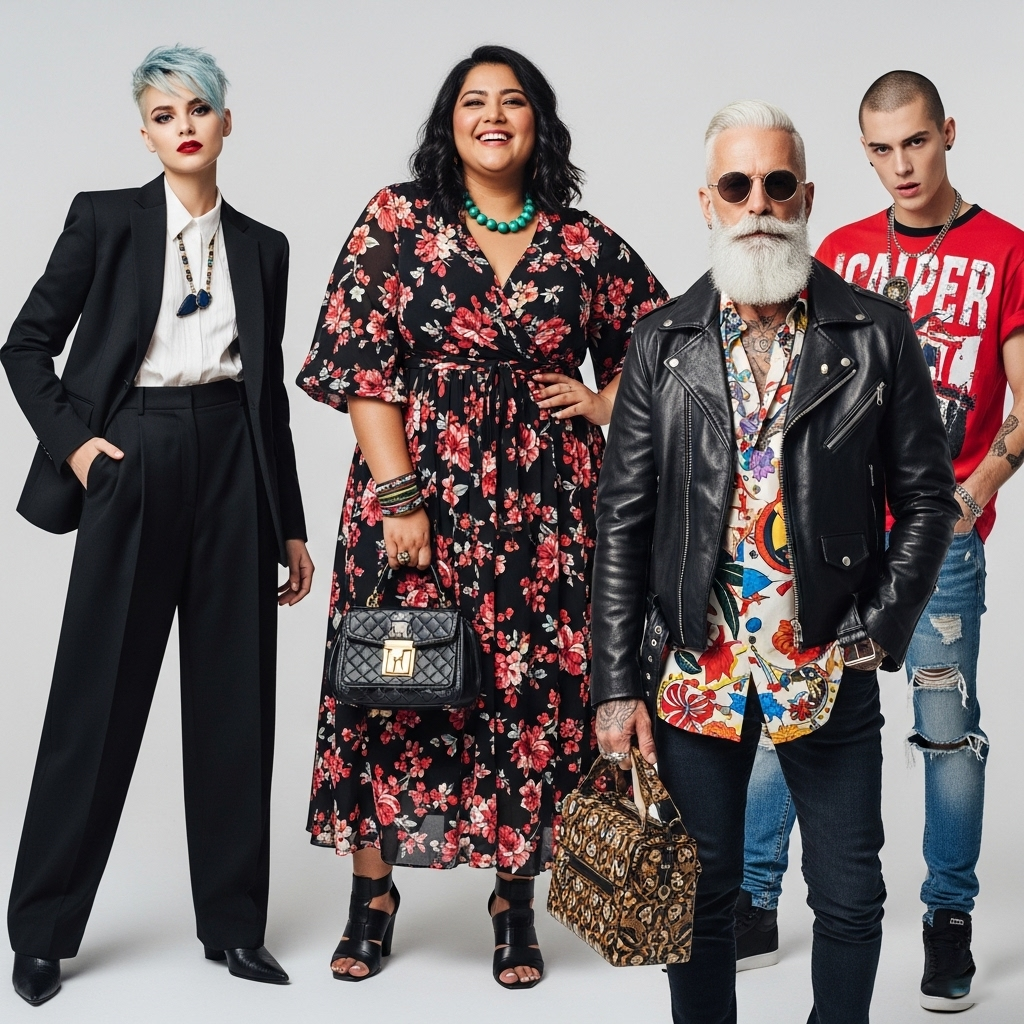Blog
More Than Just Clothes: Exploring Fashion as a Form of Self-Expression and Identity

Fashion is often dismissed as frivolous, a superficial concern of trends and vanity. However, to view it solely in this light is to miss its profound depth. At its core, fashion is a powerful, non-verbal language, a potent form of self-expression and identity. It’s how we signal to the world who we are, who we aspire to be, and how we feel, without uttering a single word. Our clothing choices are a daily act of communication, reflecting our individuality, cultural affiliations, personal beliefs, and even our moods.
From the moment we choose what to wear each morning, we are engaging in an act of self-definition. Do we opt for comfort and practicality, projecting an image of ease and groundedness? Or do we don a bold, colorful ensemble, signaling creativity and an adventurous spirit? Every decision, from the cut of a pair of jeans to the color of a scarf, contributes to the narrative we construct about ourselves. This isn’t just about conforming to societal norms; it’s about actively shaping our own image.
Fashion’s role in identity formation is particularly crucial during adolescence, a period of intense self-discovery. Teenagers often experiment with various styles – from punk to preppy, goth to bohemian – as a way to try on different identities, find their tribe, and understand where they belong. These sartorial explorations are not merely superficial; they are essential steps in forging a sense of self. Even in adulthood, our style continues to evolve, adapting to new life stages, career paths, and personal growth, reflecting our ongoing journey of self-discovery.
Beyond individual identity, fashion plays a significant role in group identity and belonging. Uniforms, whether formal (like a school uniform or military attire) or informal (like the distinctive clothing of a subculture), serve as powerful markers of affiliation. They foster a sense of community, shared values, and solidarity among members. Think of the distinct style associated with bikers, hip-hop artists, or environmental activists – their clothing immediately communicates their shared interests and collective identity. This visual shorthand allows for immediate recognition and connection, building bridges between like-minded individuals.
Furthermore, fashion can be a potent tool for personal empowerment. Dressing in a way that makes us feel confident and authentic can profoundly impact our mood and performance. The concept of “power dressing” isn’t just about conforming to corporate norms; it’s about harnessing the psychological effect of clothing. When we feel good in what we’re wearing, we stand taller, speak with more conviction, and project an aura of capability. This psychological uplift can translate into tangible benefits, whether in a job interview, a presentation, or simply navigating daily challenges with greater self-assurance.
Historically, fashion has also been a battleground for social and political expression. From the suffragettes shedding corsets to advocate for women’s rights, to the adoption of counter-cultural styles as acts of rebellion, clothing has consistently been used to challenge norms, protest injustices, and express dissent. Today, designers and individuals alike use fashion to champion causes, raise awareness for social issues, and push boundaries around gender, race, and body positivity. Slogan t-shirts, politically charged prints, and the embrace of diverse body types on runways all speak to fashion’s capacity as a platform for social commentary and advocacy.
The rise of digital platforms and social media has amplified fashion’s role in self-expression. Instagram, TikTok, and other platforms allow individuals to curate their personal aesthetic, share their style with a global audience, and connect with like-minded individuals. This democratization of fashion has moved it beyond the exclusive realm of runways and magazines, empowering everyone to be a stylist, a trendsetter, and a storyteller through their clothes.
In conclusion, fashion is far more than just fabric and trends. It’s a fundamental aspect of human behavior, deeply intertwined with our sense of self, our relationships with others, and our place in the world. It’s a canvas for creativity, a shield for protection, a banner for belonging, and a voice for the voiceless. By recognizing fashion as a profound form of self-expression and identity, we can engage with it on a deeper, more meaningful level, celebrating its power to tell our unique stories to the world.
